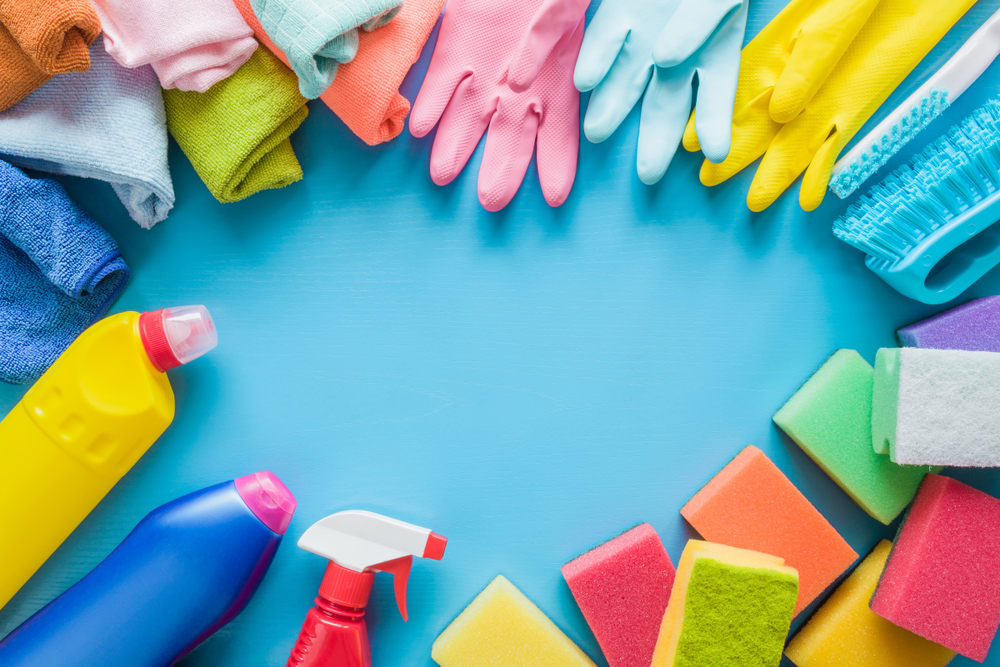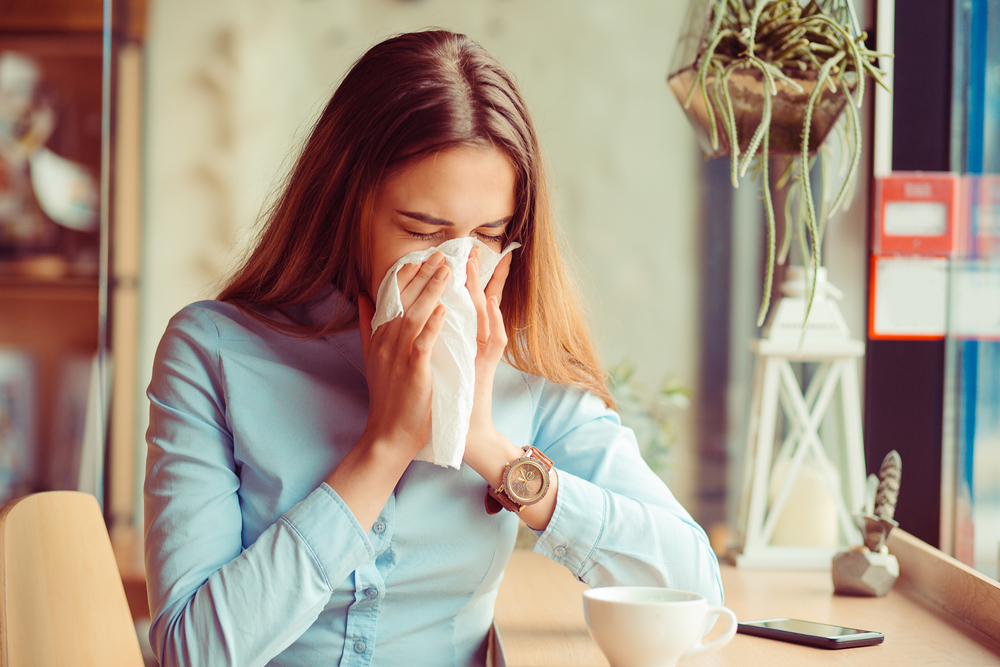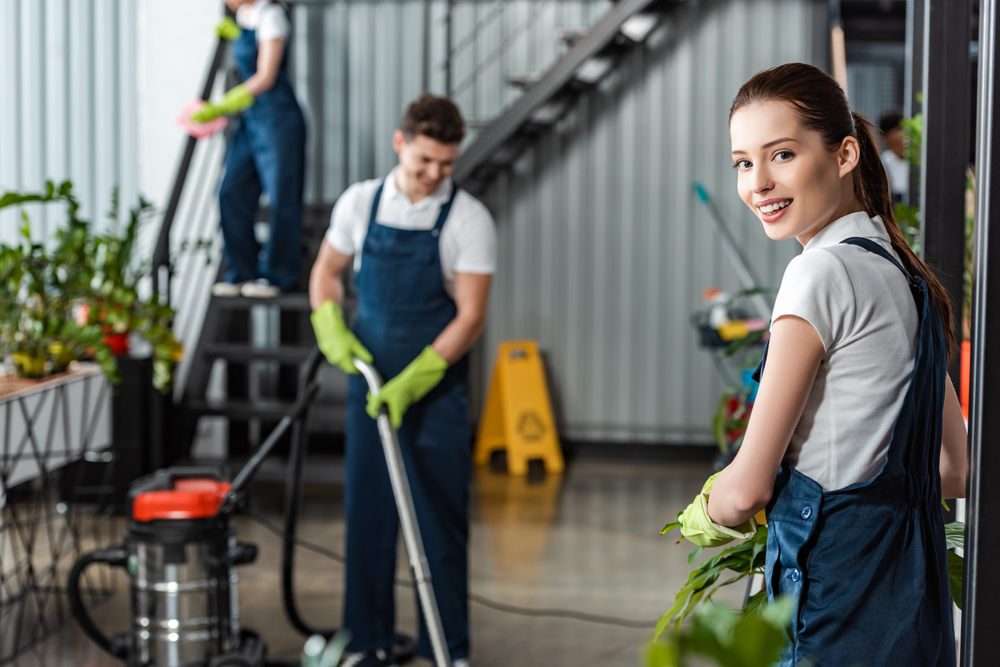A Closer Look at the 7-Step Office Cleaning Process
The 7-step cleaning process is a general cleaning protocol, implemented by the government to protect the public. The policies and procedures in this strategy have been widely adopted by cleaning professionals over the years and it is now applied in all settings including offices, homes and commercial facilities.
While the goal is to get rid of dirt, grime, and bacteria, it is important to note that not all settings are designed to be cleaned in the same way. Some areas have more stringent regulations than others. For example, the process of cleaning a hospital will vastly differ from that of a retail shop. Also, varying structures may get in the way and so, we have decided to get into the gist of things and explore the 7-step cleaning process and how it applies to different areas.
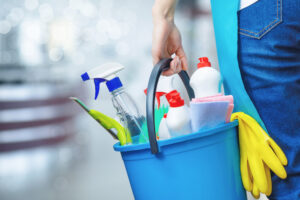
The 7-Step Cleaning Process
The commercial cleaning industry commonly utilizes a seven-step approach to cleaning rooms that involves addressing specific items before moving on to subsequent steps. It ascertains that each office cleaning task is done in an effective and consistent manner. That said, here is a closer look at each of the steps and their importance in the overall process.
1. De-clutter and Empty Trash
The first step involves clearing away any items that may be on floors or surfaces like books, papers, and loose objects. Garbage bags and liners are also emptied and disposed of, following thorough sanitization of the inner part and putting a new trash bag.
2. Dusting at Higher Levels
Next, we dust anything above the shoulder level, in a clockwise or anti-clockwise motion. We do this so that the damp process is much easier, such as clearing the debris before mopping.
3. Damp Wiping
The third step involves using a damp cloth with a neutral disinfectant for high-touch surfaces like phones, doorknobs, desks, and switches, with the exception of glass surfaces. This is an extremely vital step as bacteria is highly concentrated on these surfaces. You can click here to learn more about common bacterial hot-spots.
4. Restocking Products & Items
Once high-touch surfaces have been cleaned, the next task is to restock necessary items for remediation. In bathrooms, it is essential to replenish paper towels, soaps, and toilet paper in order to maintain everyday cleanliness and uphold social standards. By providing these cleaning products publicly, the spread of bacteria and other contagions can also be reduced.
5. Cleaning or Dust Mopping the Floor
Once the high and shoulder-level surfaces are cleaned, the next place of attention is the floor. Here, we use a dust or dry mop to collect dust that has accumulated on the floor in order to make the wet mopping process more manageable. We will also move around heavy or obstructing objects to ensure every spot is dustless.
6. Inspecting the Entire Place for Missed Steps
Before we move to the final stage, our team will walk around the entire area and inspect it for places that need additional cleaning or things that are out of the norm. If there are any broken items, the janitor is not required to do the repairs, but the damages should be reported to the owner. This step is also crucial as it helps prevent damaged items from tracking dirt across the floor during the wet mopping process.
7. Damp-Mopping
The last step of the cleaning process is known as damp-mopping or wet-mopping. The cleaner uses a mop and a diluted or neutral cleaner to clean around the edges of the room and then proceed to the center by poking towards the middle in an 8-sided star shape. This is to reduce the chances of stepping on the wet surface and provide a clean finish without additional work. Once this step is done, we leave the floor to air dry.
Also, it is important to add a clearly visible wet floor sign. This is to avoid the chances of a slip and fall, which could easily leave to a lawsuit if someone is injured.
Keep in mind that this 7-step process is an industry-standard. It’s simply a guideline and every facility may require a varying approach.
The Specific Steps to Cleaning a Bathroom
The standard for cleaning a bathroom entails the above-mentioned initial steps- getting rid of the trash, restocking supplies, and cleaning the mirrors. However, it is a good idea to let the toilet cleaner and urinal soak for a while. This makes the cleaning product more efficient in killing the microbes.
When wiping down the toilet or urinal, avoid using the same cloth on other surfaces. You should use either a one-time-use cloth or a disposable paper towel, specifically for that surface. Use a brush exclusively for cleaning the inside of the toilet and separate cloths for wiping other surfaces. Effective disinfection for all surfaces in the bathroom is also imperative, so ensure you utilize professional cleaning products for this.
Hospital Cleaning Standards
When it comes to cleaning a healthcare facility, it’s a no-brainer that it involves different procedures. The guidelines or standards for healthcare facility cleaning may differ, but they are all put in place to control highly infectious substances and protect patients and staff members.
Using cleaning materials that are not only strong enough to eliminate stubborn microbes but also gentle enough to ascertain patient safety is vital. Striking the right balance may require the pH levels to ascertain consistent efficacy without causing harm. Also, it’s equally important to pay attention to high-touch surfaces like IV poles, beds, headboards, remotes, buttons, and rails.
Commercial or Office Cleaning
Offices or commercial settings come in different styles, with some spaces posing unique challenges. Generally, the seven-step cleaning process still applies in disinfecting high-touch surfaces such as doorknobs, computers, desks, and phones. A primary obstacle is usually the carpet, which can be the dominant flooring in many spaces. Regular vacuuming is required, but some specialized tools may be required for particularly dirty carpets.
By following these guidelines, you can ascertain a well-cleaned space that is healthy and comfortable to live or work in.
For further in depth cleaning tips, check out The Best Office Cleaning Checklist.
